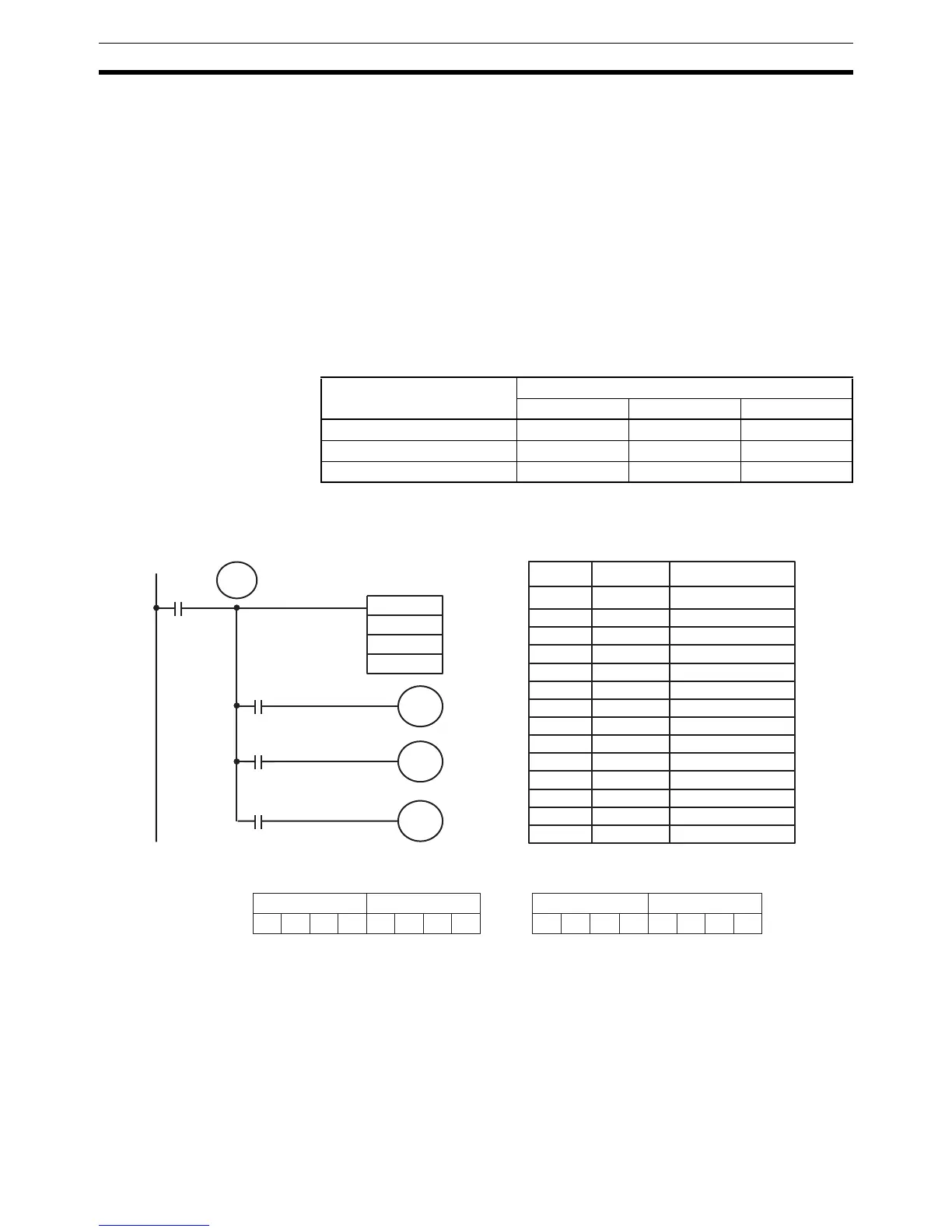288
Comparison Instructions Section 5-19
Description When the execution condition is OFF, CPSL(––) is not executed. When the
execution condition is ON, CPSL(––) compares the 32-bit (8-digit) signed
binary contents in Cp1+1, Cp1 and Cp2+1, Cp2 and outputs the result to the
GR, EQ, and LE flags in the SR area.
Precautions Placing other instructions between CPSL(––) and the operation which
accesses the EQ, LE, and GR flags may change the status of these flags. Be
sure to access them before the desired status is changed.
Flags ER: Indirectly addressed EM/DM word is non-existent.
(Content of *EM/*DM word is not BCD, or the EM/DM area boundary
has been exceeded.)
EQ: ON if Cp1+1, Cp1 equals Cp2+1, Cp2.
LE: ON if Cp1+1, Cp1 is less than Cp2+1, Cp2.
GR: ON if Cp1+1, Cp1 is greater than Cp2+1, Cp2.
Example In the following example, the content of 103, 102 is less than that of DM 0021,
DM 0020, so 10002 is turned ON and the other bits, 10000 and 10001, are
turned OFF.
Comparison result Flag status
GR (SR 25505) EQ (SR 25506) LE (SR 25507)
Cp1+1, Cp1 < Cp2+1, Cp2 0 0 1
Cp1+1, Cp1 = Cp2+1, Cp2 0 1 0
Cp1+1, Cp1 > Cp2+1, Cp2 1 0 0
CPSL(−−)
DM 0020
102
00500
25505
10000
25507
10002
TR
0
25506
10001
Greater Than
Equal
Less Than
000
Address Instruction Operands
00000 LD 00500
00001 OUT TR 0
00002 CPSL(−−)
102
DM 0020
000
00003 AND 25505
00004 OUT 10000
00005 LD TR 0
00006 AND 25506
00007 OUT 10001
00008 LD TR 0
00009 AND 25507
00010 OUT 10002
Cp2+1: DM 0021
056 A
<
Cp1: 102
F57 B
(−2,101,938,823 decimal) (90,872,283 decimal)
Cp1+1: 103
82B 6
Cp2: DM 0020
99D B

